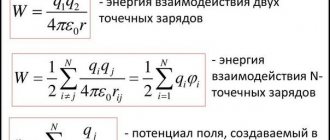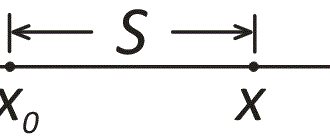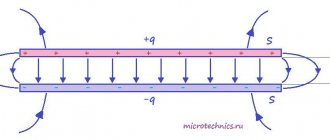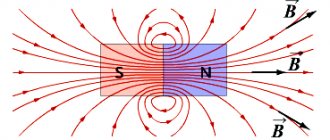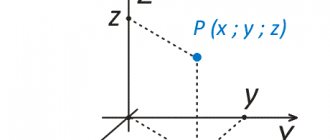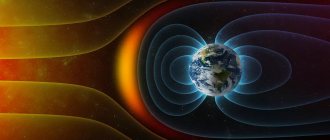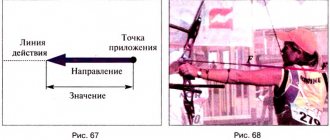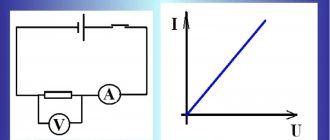General information
There are several types of interactions. For example, gravity is determined by the force of gravity, and friction and elasticity are of an electromagnetic nature. They are studied by electrodynamics, one of the branches of which is electrostatics. The essence of this science is to study the interaction of charges that are in a stationary state.
From a physical point of view, any body influences each other. There is always a force of attraction between them. But this phenomenon is invisible due to the weakness of existing forces associated with body weight. In 1600, physicist William Gilbert, conducting experiments with amber, discovered that if it was rubbed on wool, it began to attract light objects. They discovered that there is a certain substance with which it is possible to describe a new type of interaction. It received the name “electrostatic field”.
This term comes from the word “electron”, which means “amber” in Greek. It was found that in nature there are forces caused by electric charge. They decided to understand it as something whose presence on bodies causes their electrostatic interaction. This process itself was called electrification. Bodies capable of interacting with each other began to be considered electrified.
In 1729, Charles Dufay, a member of the Paris Academy of Sciences, while studying the forces of interaction between different bodies, established that there are two types of energy. He obtained one by rubbing glass on silk (glass), and the other by rubbing resin on wool (resin). As a result, a key difference between the emerging forces and gravitational ones was established. The first had not only attraction, but also repulsion.
Benjamin Franklin proposed dividing existing charges by sign into positive and negative. Thus, the following natural properties were formulated:
- every body consists of elementary energy carriers;
- electric charge is a numerical characteristic;
- particles with the same sign repel each other, and particles with the same sign attract;
- in the world the number of positive charges coincides with the number of negative ones.
That is, under a certain action, for example, friction, it is possible to create conditions under which charge separation occurs in bodies, and their magnitude will be the same. This effect was called superposition. Moreover, an electrostatic field arises between the separated particles, the energy characteristic of which is taken to be potential.
Why does an electrician need a potentiometer?
What is power factor
This device is widely used in practice for voltage modulation. The fact is that many sources (especially those designed for autonomous operation: battery cells, solar panels, etc.) have a constant voltage that cannot be controlled without special devices, which can cause problems. To reduce the initial voltage of such an element, divider devices equipped with potentiometers are used.
Potentiometer-rheostat
How does a potentiometer work? It is a resistor with a pair of terminals and a movable slider with another terminal. Such a variable resistance device can be connected in two ways:
- Like a rheostat, using a slider lead and one of a couple of others. Resistance is measured by moving the slider along the resistor body. In this case, regulation of the circuit current is possible by connecting such a rheostat and a voltage source in series.
- By a potentiometric method, using each output from the device’s trio. Two main terminals are connected in parallel with the source, and the reduced voltage is removed from the slider mechanism and one terminal. In this case, an electric current flows through the resistor device, creating a voltage drop between the slider and the side terminals. In such a model, a large load is placed on the power source, since for the accuracy of regulation and the absence of failures, it is necessary that the resistor resistance be several times lower than the load value.
Potentiometric connection of the device
Thus, the concept of potential is used in different areas of physics: both in mechanics and in the study of electricity. In the latter case, it acts as a characteristic of the field. The quantity under consideration cannot be measured directly, but the difference can be measured, then one charge is taken as the reference point.
Work of the electrostatic field
Let there be a charge located in an electric field. A constant force acts on it. If an energy carrier moves from one point in space to another, then they speak of doing work. In the simplest case, we can consider a uniform field . A capacitor can be used as it. Let the right plate in it be positively charged, and the left plate negatively.
It is believed that the electric field lines will be directed from plus to minus. At some point in this homogeneous state there is a charge. For specifics, it can be taken positive and denoted by the letter A. Under the influence of forces, it moves to point B. The task is to find the work done by the field to change the position of the charged particle.
It is known from mechanics that such an action can definitely be the product of the force acting on the charge and the displacement modulus, multiplied by the cosine of the angle between them: A = F * S * cos (a). Since the charge is positive, its direction will coincide with the electric field lines (tension E). The force is found by the formula: F = q * E. Then, substituting the modulus of this vector into the expression for work, we can write: A = q * E * S * cos (a).
The product S * cos (a) is the projection of the displacement segment onto the direction of the electric field. It can be depicted as a perpendicular dropped to E. The result is a right triangle. The adjacent leg (projection) can be designated by the letter d. As a result, the formula for the work will take the form: A = q * E * d, where:
- q—charge;
- E - tension;
- d—displacement projection.
Let the charge move along the curve. For example, the path goes A-C-B. This means that there will be two vectors S1 and S2. Then the work will be determined as the sum A = Σ ΔAi. That is, if the field is uniform (electrostatic), then the work of moving the charge does not depend on the trajectory, but is determined only by the initial and final position of the charge carrier.
The forces of gravity and elasticity have this property. They are called potential. Therefore, the work of moving electricity is the same. It occurs due to the potential energy of the charge located in the field. Therefore, work equals a decrease in its value. The action performed is proportional to the charge, that is, the ratio: W / q. This quantity is called “electric potential”.
Potential energy
When calculating the potential energy of a test charge at this point in the field, they use the property in which the difference in potential energy at two points is equal to the work done when moving this value from one point to another (the same was done, including the energy in the gravitational field).
In order to calculate the potential energy at this point, you need to move the test charge to a place where the potential is zero. Such a place is located at a point infinitely distant from the source. The positive or negative sign of the potential is chosen depending on whether the load with the source repels or attracts. If the source charge is negative, then finding the electrostatic potential is the same. When the source is positive, so is the potential.
Properties of potential
There is a voltage between particles in an electric field. It is equal to the ratio of work to charge. Find it using the formula: U = A / q. The unit of measurement for voltage is the volt. It is designated by the letter B; this quantity is characterized by the ratio of joule to coulomb. Since the potential difference is actually a voltage, it is also measured in these quantities.
Electric potential is denoted by the letter φ (phi). It allows us to describe the electric field, which is why it is called the energy characteristic. This is a scalar quantity. It is defined as the ratio of the potential energy of a charge to its value. At the same time, tension is a power characteristic. Since these two phenomena describe the same thing, there is a connection between them.
Tension allows us to determine the force acting on the energy carrier: E = F /q. If the vector has the same direction at all points in space, then the field is uniform. In it, the charge is acted upon by a force F, defined as the product of the charge and the intensity vector. Let a particle move from A to B. Then it will cover a distance d.
The work done will be given by A = q * E * d. This is the same as A = U * q. The written expressions can be equated, and the left and right sides can be reduced by q. The result is a relationship between quantities: U = E * d. Since voltage is the difference between the potentialities of the starting and ending points, the formula can be rewritten as follows: φ1 - φ2 = E * d.
From this we can draw conclusions:
- If there is no field in a certain region of space (E = 0), then φ 1 = φ 2, that is, the potential is equal to a constant. In other words, φ will be the same at all points. For example, at all points of the conductor the potential will be the same.
- Essentially, potential energy is the matter that determines the electrical interaction of bodies. Therefore, to determine it, you need to know the value of φ in the initial position and after moving the charge. For convenience, the initial state is taken to be zero. In electrical engineering, the zero potential level is taken to be the size of the Earth. In theoretical physics, it is believed that φ = 0 at infinity. Where there is no electric field.
- Equipotential surfaces and lines of force are mutually perpendicular.
To understand, we should define an equipotential surface. It is taken to be space, at all points of which the potential is the same.
Problem solving
To successfully solve problems related to electric potential, you need not only to know several formulas, but also to understand the essence of the phenomenon. In addition, you often have to use a reference book on electrophysics. For example, to determine the mass of charges.
Here are several typical tasks designed for students to work on independently as part of the school curriculum:
- In a conductor, at a distance from each other, there are two point charges q1 = 100 nC and q2 = 10 nC. The distance between them is 10 centimeters. Find their potential energy. To solve the problem, you need to use the fact that the force of interaction between charges is determined by Coulomb’s law: F = k * q / r, where k is a reference value (electric constant). Considering that φ = q / (4 * p * E0 * r), for the case under consideration we can write: E = (q1 * q2) / (4 * p * E0 * r) = (10-7 * 10-8) / (4 * 3.14 * 8.85 * 10-12 * 0.1) = 9 * 10-5 J.
- An electric charge moved from point A to B. At the same time, a voltage of 1 kV appeared. The work spent on movement was 40 μJ. Determine the charge value. Using the fact that voltage is a potential difference, found as the ratio of work to energy: Δ φ = A / q, the example can be solved in one action: q = A / U = 400 * 10-6 J / 1 * 103 V = 40 * 10-9 Cl.
- A metal sphere with a radius of one meter was placed on the floor. Its charge is 10-6 C. Determine how many times the field potential of a sphere will decrease at a distance of 60 cm from the center of the ball if its radius increases by 3 times. The point being examined is located inside the body. Since in this case the potential of the point in the middle and on the surface is the same, it depends on the radius of the sphere: φ1 = K * q / r. As a result, it will become three times smaller than at the beginning: φ2 = K * q / 3r.
- When moving a point charge q = 10 nC from infinity to a point located at a distance r = 10 cm from the surface of the charged sphere, work A = 0.5 μJ was performed. The radius of the sphere is 4 cm. Calculate the surface potential. The solution to the example will look like this: φ = A * (R + r) / q0 * R = 0.5 * 10-6 J * (0.2 m + 0.0 4 m) / 10 * 10-9 C * 0 , 2 m = 3 *102 V = 0.3 kV.
Thus, solving potential problems is simple. But at the same time, it is important to keep track of what the substituted values should be measured in. All calculations are performed in the International System of Units (SI).
Equipotential surfaces
If we assume that the source of the electric field is a pointwise charged particle (i.e., a central field), it follows that all points in space that are equally far from it have equal potential. In space, a collection of such points forms the surface of a sphere, and the source charge is located in the center of the sphere.
However, if the electric field is not centralized, it is still possible to assign surfaces such that a test charge placed at any point on this surface will have the same potential. For example, in the case of a uniform field, such a surface is any plane perpendicular to the field line.
